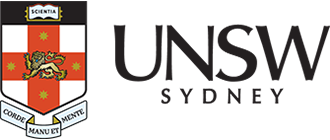Hitachi S-3400N SEM

Description
The Hitachi S-3400N SEM excels in both imaging and X-ray microanalysis. Equipped with secondary electron (SE) detector for detailed surface imaging and backscatter electron (BSE) detector for imaging and analysis of material composition. It can also provide topographic and compositional (atomic number contrast) surface imaging. This microscope is routinely used for magnifications ranging from ~20x to ~20,000x, allowing examination of features from the millimetre to micrometre scale. While predominantly operated in high-vacuum mode, the S-3400N SEM also offers a variable-pressure or “natural” mode, ideal for imaging poorly-conductive samples without the need for modification or coating. The integrated Bruker EDX system facilitates elemental area, point, line, and mapping analyses. Additionally, Bruker Feature supports semi-automated particle analysis, and Bruker Jobs enables large-area stitching of any EDS analysis, including imaging and mapping.
Specifications
-
- Petrographic slide/wafer holder
- SEM pin stub holder
- SEM M4 screw stub holder
-
- 3.0nm (SED image in high vacuum mode at 30kV)
- 4.0nm (BSED Image in VP mode at 30kV)
-
- -10 to +90
-
- 5x to 300,000x
-
- Secondary electron (SE)
- Backscatter electron (BSE)
- Energy dispersive X-ray spectroscopy (EDX)
-
- 30 mm2 Bruker X Flash 6|30 energy dispersive spectroscopy
-
- 300V to 30kV
-
- Tungsten hairpin
-
- TV rate (2 speeds)
- Fast scan (2 speeds)
- Slow scan (4 speeds)
- Photo scan
- Reduced Area
-
- Quick save (640x480px)
- Standard resolution (1280x960px)
- High resolution (2560x1920px)
- Ultra-high resolution (5120x3840px)
- Frame integration (select between 2 to 1024 frames)
- EDX Mapping
Publishing Microscopy Data Acquired on the Hitachi S-3400N SEM
-
-
- Chemical fixation, dehydration, critical point drying
- Mounting in resin
- Staining
- Polishing
- Mounting on stub with adhesive
- Coating
-
- Manufacturer: Hitachi
- Model: S-3400N
- Type: Tungsten Filament
-
- Accelerating voltage (kV)
- Detector(s) used for imaging (SE, BSE, EBSD, SDD-EDX)
-
- Detector: Bruker XFlash 6|30
- Software: Bruker Esprit
- Accelerating voltage (kV)
- For quantitative analysis: matrix correction used, calibration method used (standardless or specify standards), elements calculated via difference or stoichiometry, excluded elements, accuracy of elemental values as shown by measurement of standard(s) of known composition
-
- Adjustments to contrast/brightness
- EDS map filters applied
-
- Scalebars can be added or removed from images in the export options.
Acknowledgement:
“The authors acknowledge the facilities and the scientific and technical assistance of Microscopy Australia at the Electron Microscope Unit (EMU) within the Mark Wainwright Analytical Centre (MWAC) at UNSW Sydney.”
Credit EMU staff: Feel free to mention EMU staff who have assisted you with your work! If staff have been involved with your work beyond basic training and support (e.g., project design, complex data/image processing, independent imaging/analysis, manuscript preparation), it may be appropriate to discuss co-authorship with the relevant staff and your supervisor.
Don’t forget to email the EMU lab manager with a copy of your publication to claim 2 hours of free microscopy time.
-
Applications
- Materials Science
- Life sciences
- Biomaterials
- Solar and battery materials
- Earth Sciences
- Medical Sciences
- Palaeontology
- Cultural heritage materials
Capabilities
SEM imaging
Backscatter imaging
Energy dispersive X-ray analysis (EDX)
Topography
Instrument location
Electron Microscope Unit
Basement,
June Griffith Building (F10)
UNSW Sydney, NSW 2052
Access – To discuss training or how your project could benefit from using this microscope, please contact the EMU using the enquiries form or email EMUAdmin@unsw.edu.au
Parent facility
Explore more instruments, facilities & services
Our infrastructure and expertise are accessible to UNSW students and staff, external researchers, government, and industry.





